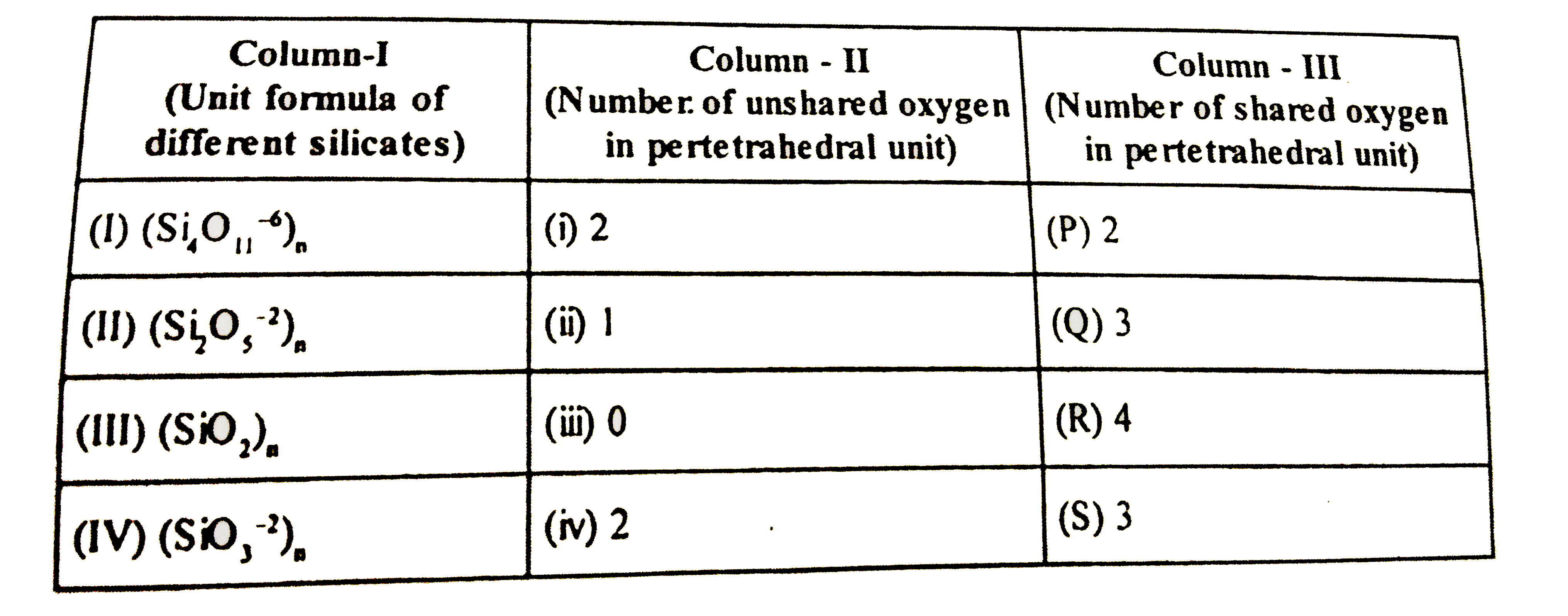Match the columns in the following table and explain them.

i. Farsightedness → Far away object can be seen clearly → Convex lens
Explanation: In farsightedness, the human eye can see far away object clearly but cannot see nearby objects distinctly. To correct this defect, a convex lens with proper focal length is used.
ii. Presbyopia → Problem of old age → Bifocal lens.
Explanation: The ability of the muscles near the eye lens to change the focal length of the lens decreases with age. This defect is known as presbyopia. In this defect, sometimes people suffer from both nearsightedness and farsightedness. Therefore, bifocal lenses are required to correct this defect.
iii. Nearsightedness → Nearby object can be seen clearly → concave lens Explanation: In nearsightedness, the human eye can see nearby objects clearly but cannot see far away objects distinctly. To correct this defect, a concave lens with proper focal length is used.
Related Playlists
- BOOK - TARGET PUBLICATIONCHAPTER - LENSES EXERCISE - Give reasons6videos
LENSES
- BOOK - TARGET PUBLICATIONCHAPTER - LENSES EXERCISE - Distinguish between3videos
LENSES
- BOOK - TARGET PUBLICATIONCHAPTER - LENSES EXERCISE - Match the following2videos
LENSES
- BOOK - TARGET PUBLICATIONCHAPTER - HEATEXERCISE - Values to remember10videos
HEAT
- BOOK - TARGET PUBLICATIONCHAPTER - MODEL QUESTION PAPER (PART -1 )EXERCISE - Questions21videos
MODEL QUESTION PAPER (PART -1 )
Similar Questions
Match the column in the following table :
 View Solution
View SolutionAnswer question 1,2 & 3 by appropriately matching the information given in the three columns of the following table .

Which of the following is correct ?View SolutionMatching the information given in the three columns of the following table .

For the sheet silicate the only CORRECT combinatin is :-View SolutionQ.12, Q.13 and Q.14 by appropriately matching the information given in the three columns of the following table.

Match the correct combination?View Solutionappropriately matching the information given in the three columns of the following table.

Which of the following combination gives correct information.View SolutionMatching the information given in the three columns of the following table .

For single chain silicate the only CORRECT combination is :-View SolutionMatching the information given in the three columns of the following table .

For 3D silicate (silica) the only CORRECT combination is :-View SolutionAnswer 12, 13 and 14 by appropriately matching the information given in the three columns of the following table.

In which product formation is not possible ?View SolutionAnswer Questions by approximately matching the information given in the three columns of the following table.

The INCORRECT combination is:View SolutionAnswer Questions by approximately matching the information given in the three columns of the following table.

The CORRECT combination is:View Solution


